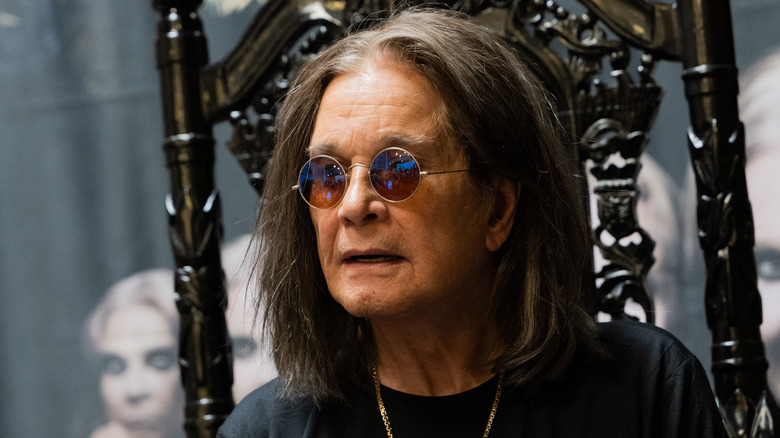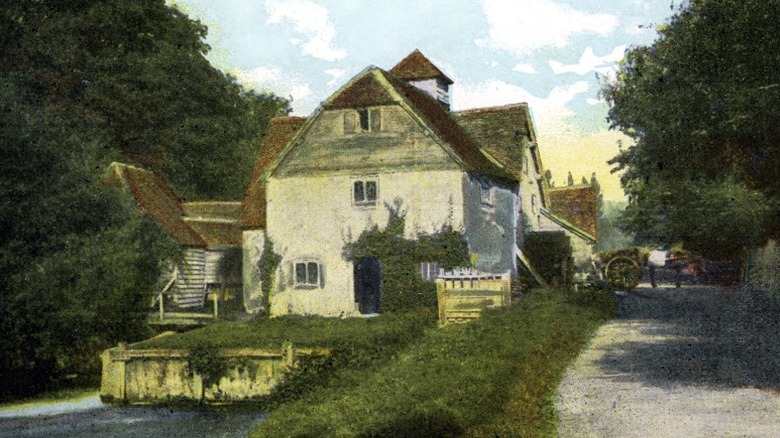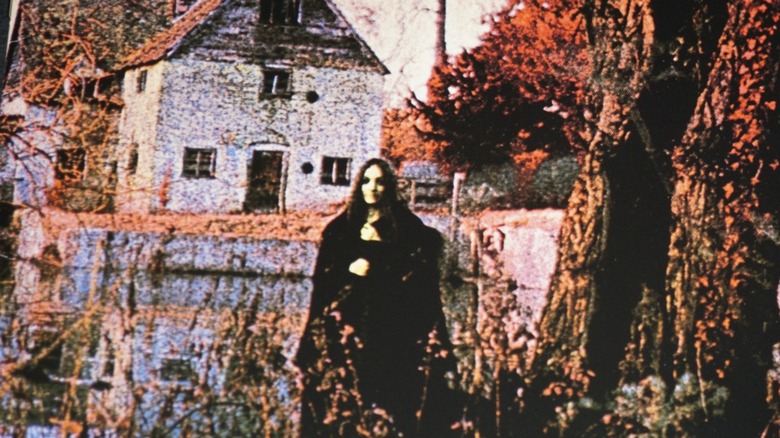Who Is The Woman On The Cover Of Black Sabbath's Landmark Album?
The 1970 release of Black Sabbath's debut album changed the music industry forever. The self-titled album is considered by many to be the first true heavy metal album (per Loudwire) and features seven riveting tracks, each of which is framed by Ozzie Osbourne's eerie vocals and powered by guitarist Tony Iommi's doomy guitar licks. The first track on the A side of the album, also titled "Black Sabbath," opens with the sounds of a heavy thunderstorm. As you hear the rain pouring and the thunder crashing, a church bell is ringing in the distance. The first guitar riff plays nearly 40 seconds into the track, with Iommi playing three chords in succession that musicians have referred to as "the devil's tritone" (or "the devil's interval") for centuries (via Classic FM). This sequence was rumored to have been banned by the Catholic Church, which referred to it more commonly as "diabolus in musica," or "devil in music" (per Fender).
"Black Sabbath" was released in Europe on February 13, 1970, before its U.S. release in June. Those who were perusing record stores that year were sure to have seen the album, perhaps drawn by the album art. The cover of the record brings a visual representation of the music contained within, which is as spine-chilling as it is gritty. It features a fall landscape, with a dead thicket in the foreground that is flanked by a large dead tree on the right. In the background is a weathered watermill. And standing at a point that's near the center is a black-clad woman with long hair and a somber expression. The chilling cover art made many wonder who the woman was and what she was meant to represent.
The photo for the cover was taken in front of a 500-year-old mill
Rolling Stone featured the 50th anniversary of the release of "Black Sabbath" in 2020, praising the release as the frontrunner for what would later become known as heavy metal. In this retrospective, the publication discussed the album art for this iconic record at great length, noting that the combination of the art and the lyrics added fuel to the theory that the band's members were avowed Satanists. For perspective, they spoke with the man behind the cover, photographer Keith Macmillan. He told of how the photo was taken in front of a 500-year-old water mill at Mapledurham in Oxfordshire (above). The photoshoot began at 4 a.m., with Macmillan attempting to use dry ice to create the effect he was looking for. When this failed, he employed the use of a smoke machine.
In the title track, the lyrics reference a "figure in black pointing at me," drawing a strong similarity to the woman that Macmillan used as a model for the shoot. After first trying to give her a sexy appearance, Macmillan decided to ditch any risque shots and photograph her wearing a black cloak. "Any kind of sexuality took away from the more foreboding mood," he told Rolling Stone.
The model was teenage Louisa Livingstone, who recalled her experiences modeling the album cover photo with the publication.
Livingstone was rumored to have been a witch
Fans of the newly released album had their own theories on the cover art. Vintage Heavy Metal reports that rumors claimed the woman on the cover was a real witch, while another one suggested that she was really Ozzy Osbourne in drag. Yet another rumor was that there wasn't really a woman there when the photo was taken and that the image of a woman mysteriously appeared after the film was processed. The inside cover of the album featured an inverted cross, only helping to fuel rumors of the band's ties with Satanism.
For her part in the album cover, Louisa Livingstone recalled being on location before dawn that morning. "I remember that it was freezing cold," she told Rolling Stone. She was pretty sure that the Macmillan said it was for Black Sabbath, but that the band name meant nothing to her at the time. Modeling led Livingstone to several acting gigs on British television, including "Rumpole of the Bailey," "Kids," and "Fame Is the Spur" (via IMDb). She is currently producing her own electronic music under the name Indreba (per 6AM Group).


